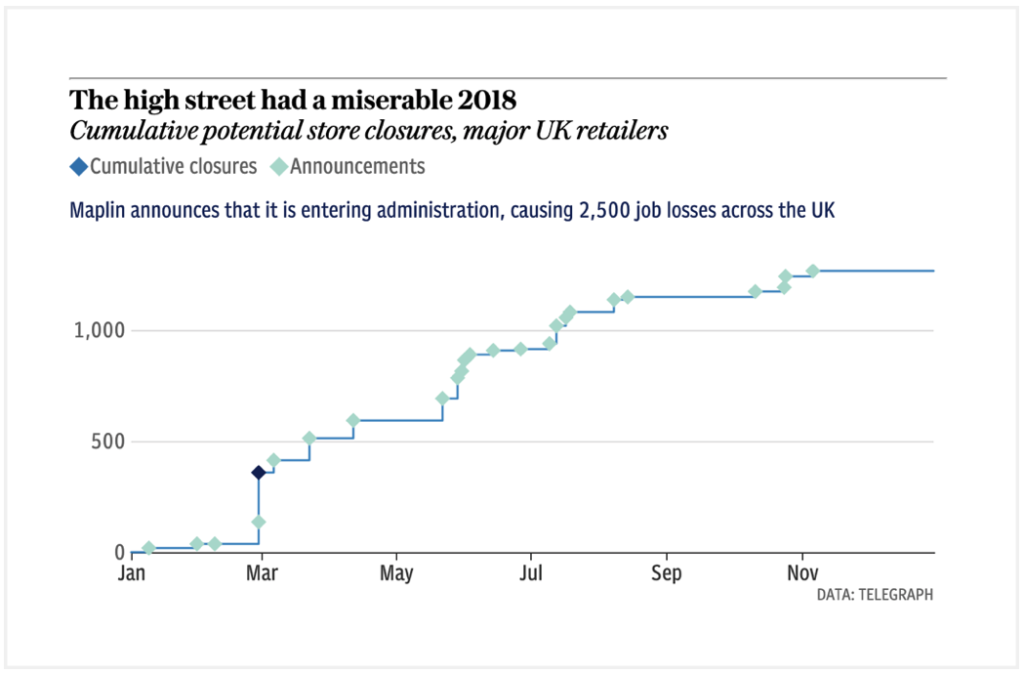To say today’s bricks-and-mortar retail stores are struggling is an understatement. More household-name chains announce store closures seemingly everyday — WH Smiths, Debenhams, and HMV are just a few examples in the UK, while in the US brands like J.C. Penney, Macy’s, and Sears are in similarly dire shape.

Excuses abound — the problem is too big, they don’t have the right people on their team, leadership is stuck in the past. But as digital experiences take over and consumer behavior changes, survival for traditional retail stores hinges on finding a way to compete with digital offerings.
The situation may sound dire, and it is. But don’t let fear stop you from getting started. Focus on small changes first.
Today’s digital-first companies thrive in large part of their agile approach to development — they sprint, they fail fast, they experiment, they iterate. They don’t have a year of meetings leading up to a year-long IT overhaul. They tackle big problems in small chunks. They focus on quick wins.
This mindset shift is the first part of the solution. The second is to wholeheartedly embrace cloud environments and cloud technology. Get a handle on your customer data. Assume your competitors understand exactly who is purchasing their product, at what time, and what actions have led them to that point. Assume they are using a real-time pipeline of data and decisions and actions to market their products to both new and existing customers. And know if you don’t start doing the same, you will be left behind.
For example, Syntasa recently worked with Dixons, a large electronics retailer, whose sales strategy traditionally depended heavily on cross-sale opportunities within their retail stores. The brand was struggling — customers were using them as a showroom and then purchasing products elsewhere online, and customers who shopped on their website weren’t buying nearly as many complementary products as they probably would have in-store. Previously, Dixons provided product recommendations to online shoppers based on generic rules: e.g., if a customer purchases a computer, he’ll probably want a mouse too. With Syntasa’s help, the brand began to use personalized data-driven recommendations driven by machine learning and AI to recommend products: e.g., if a customer purchases a computer and has previously browsed TVs, recommend he buy a TV as well. Shifting to these personalized recommendations has tripled Dixons’ add-to-basket rates.
This is a great example of a brand using an agile approach to proactively address a discrete problem, and finding success. They can now use this quick win as a proof point for implementing a data-driven approach on a broader scale.
Change is never easy. But for traditional retailers, it’s now a matter of life or death.
If any of this resonates with you, feel free to email me to share your thoughts and experiences with leveraging big data in the retail space.
Change is never easy. But for traditional retailers, it’s now a matter of life or death.
